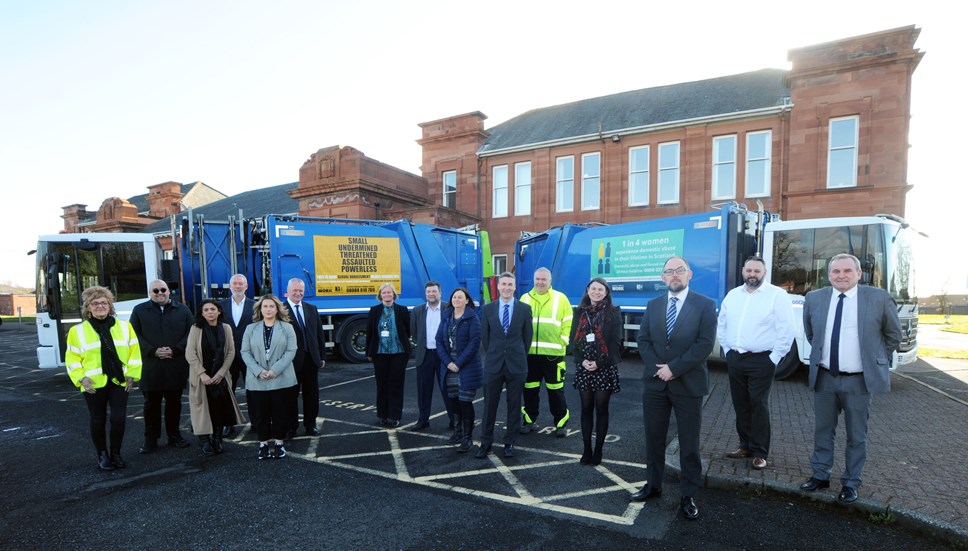
Council takes gender equalities message into the heart of communities
As part of East Ayrshire Council’s commitment to gender equality and its participation in the Equally Safe at Work programme, Council refuse vehicles have become part of a campaign to progress gender equality in the workplace and communities, supporting the prevention of violence against women.
The refuse vehicles feature information in relation to violence against women and signpost people to where they can get help. The idea was developed after the Council started working towards gaining a bronze award in Close the Gap’s Equally Safe Accreditation Programme. This programme supports Scottish local authorities to develop a range of policies and tools to address inequality in the labour market, reduce violence against women and measure equalities from a gender perspective.
Women make up 75% of the Council’s workforce and therefore the Council wants to ensure that all female employees feel valued and safe at work by carrying out a number of activities to progress the Equally Safe programme. This includes updating policy on violence against women, looking at recruitment and progression practice, and holding a range of different awareness-raising sessions.
Councillor Graham Barton, Cabinet Member for Equalities and Inclusion, said: “The Equally Safe programme has the potential to create real change for women working in local government. It involves taking steps to advance gender equality at work, supporting victim-survivors of gender-based violence and fostering a zero-tolerance culture at the Council so that elected members and managers can become leaders on gender equality not only in the workplace, but in our communities too.
“Our refuse vehicles go into the heart of our communities every week so it made sense to feature this important information on them, enabling us to reach a wider number of people.
“Once we receive our Equally Safe accreditation, we will ensure that the changes made are sustainable by consistently reviewing the work being done to ensure they still reflect the needs of the Council and its employees.”
